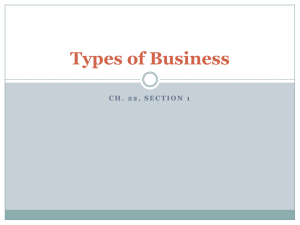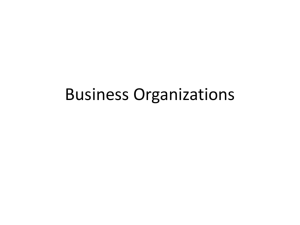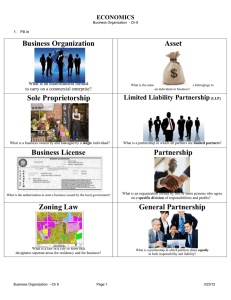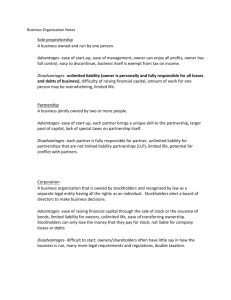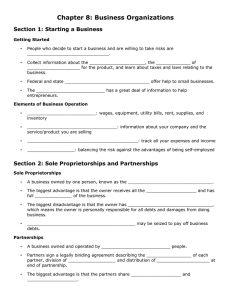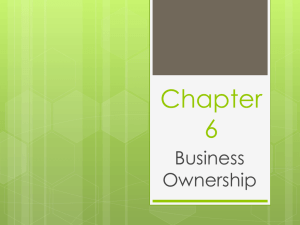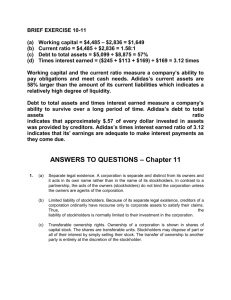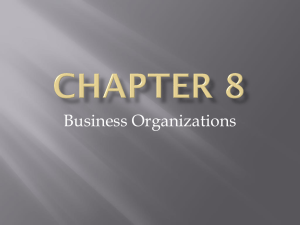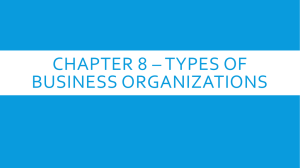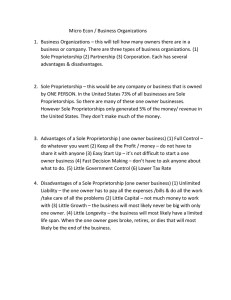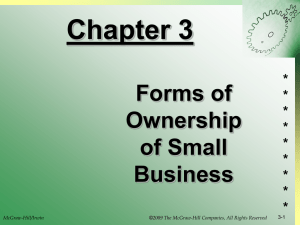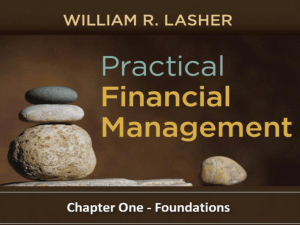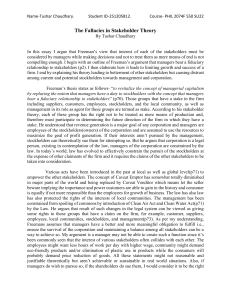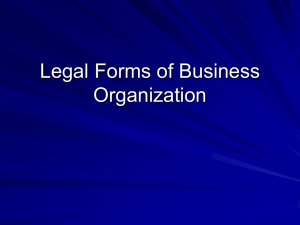Ch. 7 Notes Forms of Business Organizations 1. Sole Proprietorship
advertisement
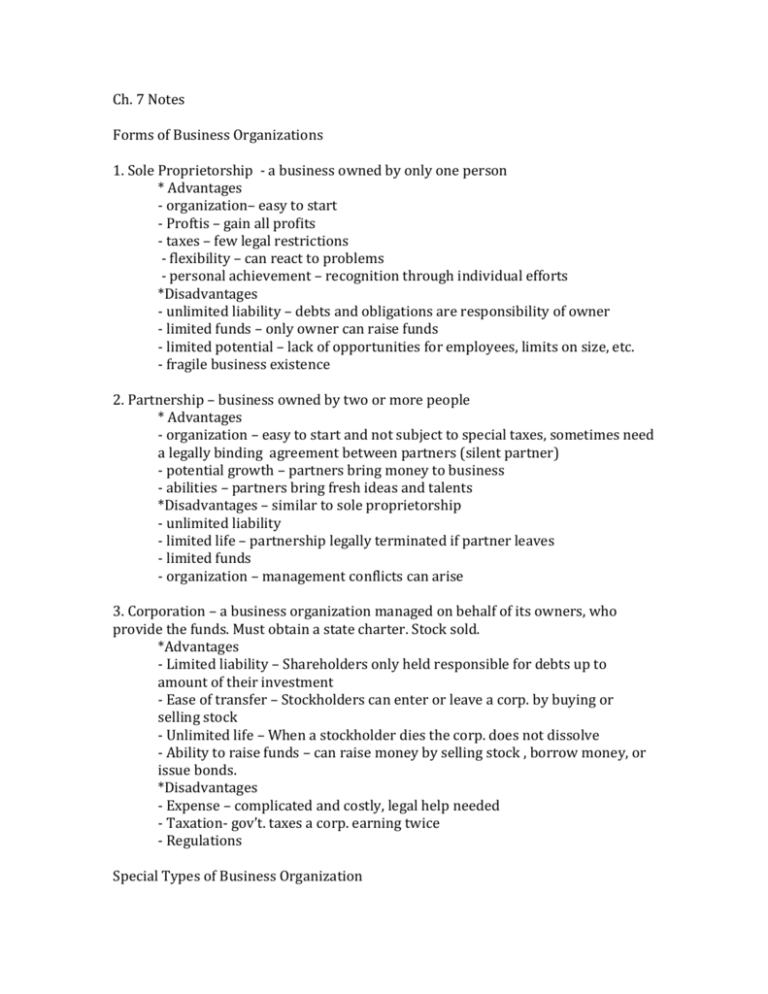
Ch. 7 Notes Forms of Business Organizations 1. Sole Proprietorship - a business owned by only one person * Advantages - organization– easy to start - Proftis – gain all profits - taxes – few legal restrictions - flexibility – can react to problems - personal achievement – recognition through individual efforts *Disadvantages - unlimited liability – debts and obligations are responsibility of owner - limited funds – only owner can raise funds - limited potential – lack of opportunities for employees, limits on size, etc. - fragile business existence 2. Partnership – business owned by two or more people * Advantages - organization – easy to start and not subject to special taxes, sometimes need a legally binding agreement between partners (silent partner) - potential growth – partners bring money to business - abilities – partners bring fresh ideas and talents *Disadvantages – similar to sole proprietorship - unlimited liability - limited life – partnership legally terminated if partner leaves - limited funds - organization – management conflicts can arise 3. Corporation – a business organization managed on behalf of its owners, who provide the funds. Must obtain a state charter. Stock sold. *Advantages - Limited liability – Shareholders only held responsible for debts up to amount of their investment - Ease of transfer – Stockholders can enter or leave a corp. by buying or selling stock - Unlimited life – When a stockholder dies the corp. does not dissolve - Ability to raise funds – can raise money by selling stock , borrow money, or issue bonds. *Disadvantages - Expense – complicated and costly, legal help needed - Taxation- gov’t. taxes a corp. earning twice - Regulations Special Types of Business Organization 1. S Corporations – stockholders pay personal income taxes based on the dividends they receive. This allows the business to avoid double taxation. May not have more than 35 stockholders and may not own 80% or more of another corporation. 2. Limited Liability Companies – combines corporation and partnership. Must have two or more members. 3. Not-for-profit Corporation – do not earn a profit, charities 4. Government- owned Corporation – Federal, state, and local government. U.S. Postal service, electric co. 5. Cooperatives – Housing co-ops, consumer (get goods at lower cost), Producer (Ocean Spray Cranberries, Inc.) 6. Franchise – a license that entitles its holder to operate his or her individually owned business as if it were part of a large chain of stores. Ex: Subway, Dairy Queen, Radio Shack). How Large Corp. are Organized 1. Charter needed – states nature of the business, gives initial owners of the stock, and types of stocks to be sold. 2. Stockholders – Sell stock to fund projects 3. Board of Directors – stockholders elect a board of directors 4. Annual Corp. Report (financial highlights, letter to stockholders from chairman of the board, etc.)
